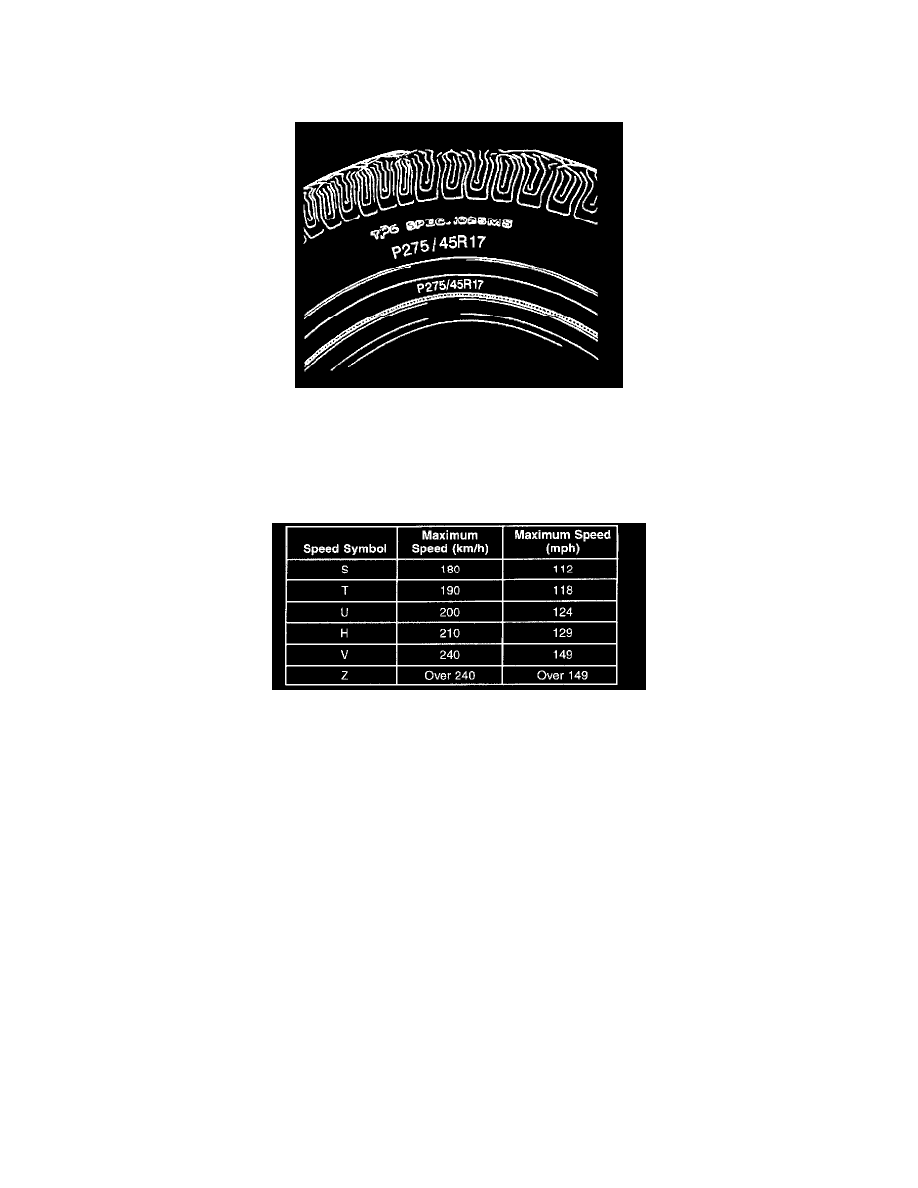Lumina V6-3.1L VIN J (2000)

Tires: Description and Operation
All Season Tires Description
Most GM vehicles are equipped with steel belted all-season radial tires as standard equipment. These tires qualify as snow tires, with a higher than
average rating for snow traction than the non-all season radial tires previously used. Other performance areas, such as wet traction, rolling resistance,
tread life, and air retention, are also improved. This is done by improvements in both tread design and tread compounds. These tires are identified by
an M + S molded in the tire side wall after the tire size. The suffix MS is also molded in the tire side wall after the TPC specification number.
The optional handling tires used on some vehicles now also have the MS marking after the tire size and the TPC specification number.
General Information
The factory installed tires are designed in order to operate satisfactorily with loads up to and including the full rated load capacity when these tires are
inflated to the recommended pressures.
Correct tire pressures, wheel alignment, and driving techniques have an important influence on tire life.
Heavy cornering, excessive rapid acceleration, and heavy braking increase tire wear.
Inflation Pressure
When you inflate the tires to the recommended inflation pressures, the factory-installed wheels and tires are designed to handle loads to the tire's rated
load capacity. Incorrect tire pressures, or under-inflated tires, can cause the following conditions:
^
Vehicle handling concerns
^
Poor fuel economy
^
Shortened tire life
^
Tire overloading
Inspect the tire pressure when the following conditions apply:
^
The vehicle has been sitting at least 3 hours.
^
The vehicle has not been driven for more than 1.6 km (1 mi).
^
The tires are cool.
Inspect the tires monthly or before any extended trip. Adjust the tire pressure to the specifications on the tire label. Install the valve caps or the
extensions on the valves. The caps or the extensions keep out dust and water.
The kilopascal (kPa) is the metric term for pressure. The tire pressure may be printed in both kilopascal (kPa) and psi. One psi equals 6.9 kPa.
